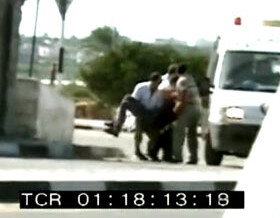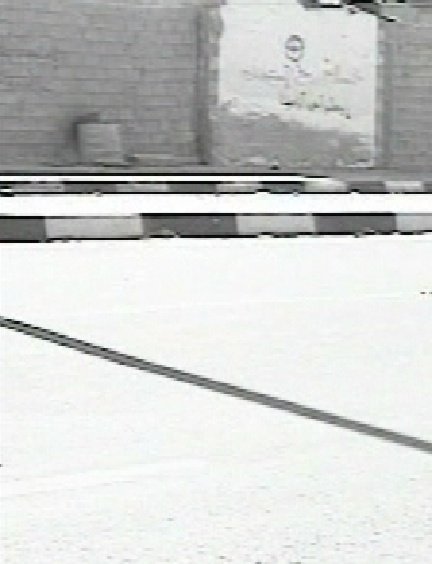
Very few people have seen or analyzed this sequence. It begins with a short shot of the barrel which now has no one near it. Although the scene is again out of focus and brief, there is no sign of the kind of pool of blood one would expect had the boy bled on his stomach for twenty minutes (abu Rahma), and had the ambulance attendant scooped his intestines off the ground to pick him up into the ambulance, nor on the wall or the barrel.

The final ten seconds record the evacuation of an individual at a distance (in front of the Palestinian Police station at the corner of the intersection). The person being evacuated is clearly neither the boy nor Jamal.
The significance of this final evacuation is that abu Rahma claimed he did not have enough battery life to film more than one minute. As a result he has no scenes of either the boy bleeding, or of the ambulance evacuation. And yet, in general, ambulance evacuation scenes were so valuable that the “street” frequently staged them for the cameras. Why abu Rahma still had batteries to film a distant, nondescript evacuation but not to film the earlier, allegedly lurid evacuation of the boy and the father is difficult to explain according to the accepted narrative in which the boy was killed.
Share
